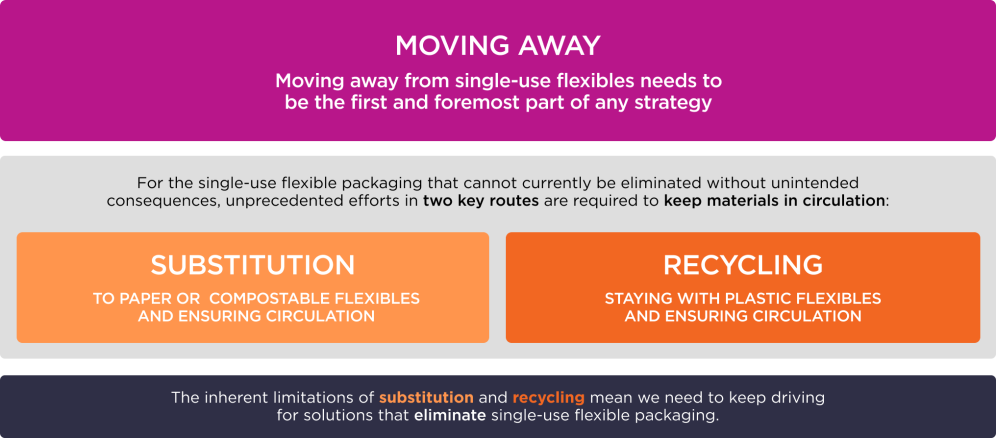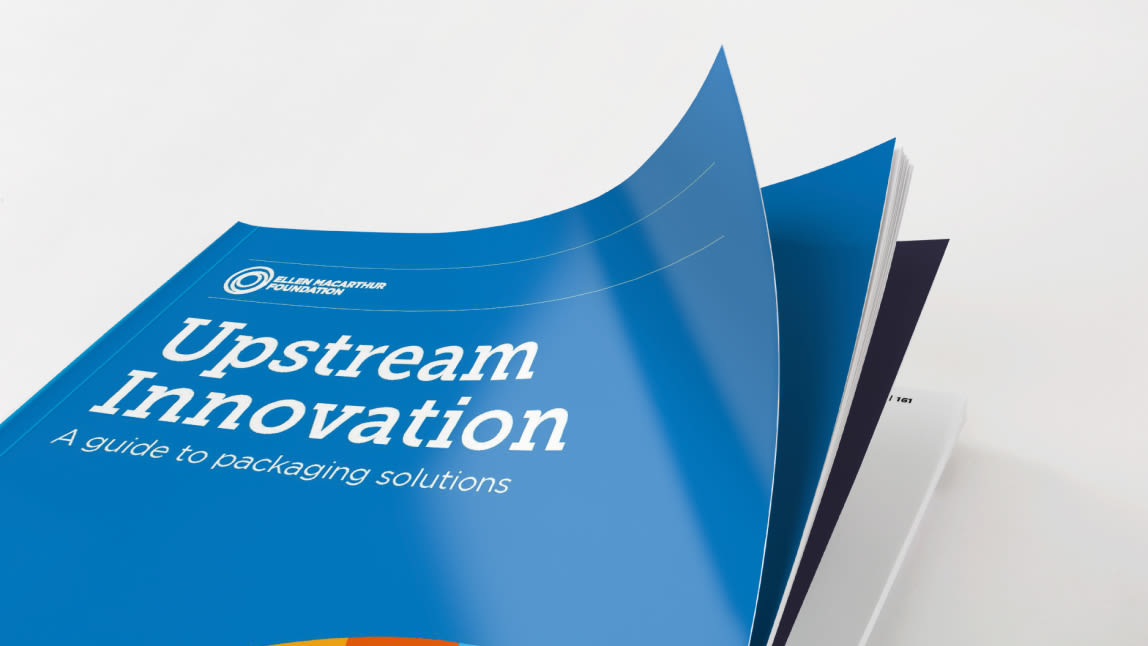There are a number of routes for tackling the issue of flexible packaging in a circular economycircular economyA systems solution framework that tackles global challenges like climate change, biodiversity loss, waste, and pollution. It is based on three principles, driven by design: eliminate waste and pollution, circulate products and materials (at their highest value), and regenerate nature.. First and foremost, however, should be for businesses to move away from using single-use flexible packaging. Flexible packaging waste is hard to deal with, regardless of material or geography, and so direct elimination and innovation, where possible, are attractive routes. For packaging that can not be eliminated, there are material substitution or recycling routes.
Strategies for dealing with flexible packaging in a circular economy

Moving away from flexibles
Elimination strategies can be split into two – direct and innovative. Direct elimination could be removing unnecessary packaging and innovative elimination could mean redesigning products so that they don’t need packaging or developing reusable packaging.
Substitution to paper or compostables
Substitution has two key options - paper or compostable plastics. Paper could be applicable for~15% of plastic flexibles. If we build organic waste collection systems, compostable plastics could potentially be considered for up to 20% of plastic flexibles.
Recycling plastic flexibles that can't be eliminated
Despite the inherent limitations of recycling plastic flexibles, recycling solutions need to be scaled. In formal recycling sectors, investment is needed, including an increase in EPR. In the informal sector, inclusive recycling systems must be developed.
Time to act
With input from over 100 experts, this work presents an overarching strategy for flexible packaging and identifies 21 specific and urgent actions that need to be commenced immediately by businesses and policymakers in order to make significant progress towards 2025 targets and beyond.










